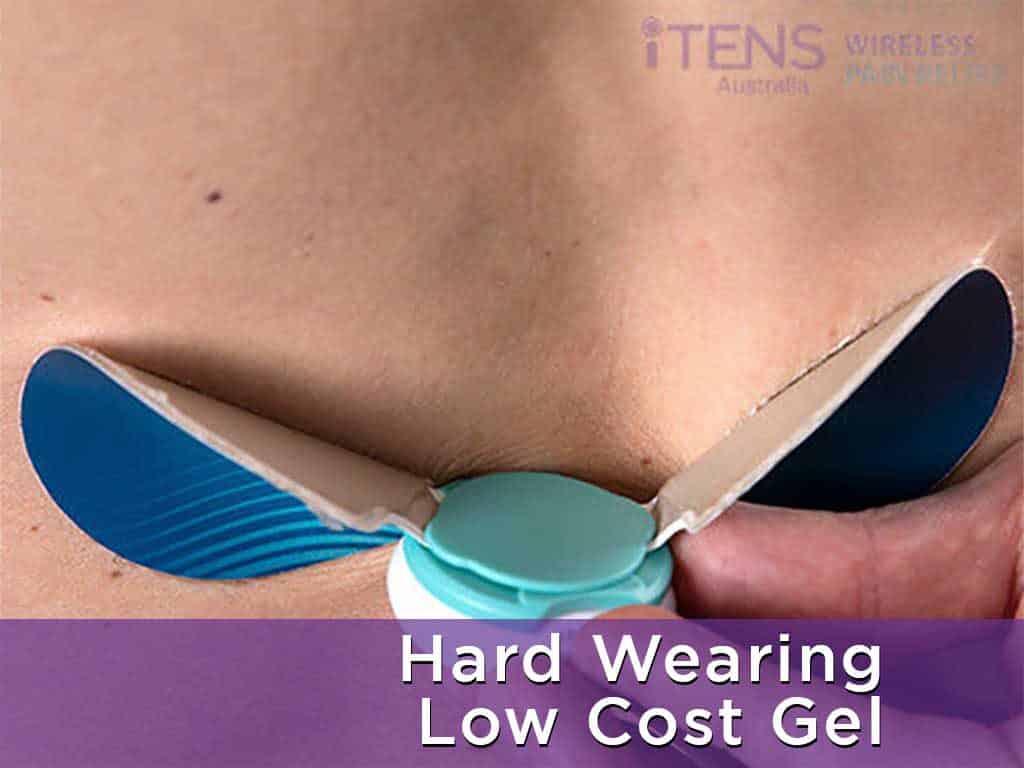
Endometriosis pain can range from mild to excruciating. Some may relieve pain through anti-inflammatory medicines. However, many people seek a stronger form of relief for severe pain. One of the methods that health professionals recommend is Transcutaneous Electrical Nerve Stimulation (TENS). Using a TENS unit for endometriosis is a natural approach to pain management. It uses mild electrical pulses to stimulate pain blocking. This would require correct adjustment of the frequencies and intensities to get the most effective result.
People with chronic pain, such as deep endometriosis, often have difficulty doing regular activities, affecting their quality of life. Many can benefit from using a TENS unit as part of their pain management routine. However, it is crucial to have a comprehensive understanding of how the device works to achieve the desired results. In this guide, we will explore the functions of the TENS machine, how to use it for endometriosis, and the safety guidelines to consider.
What is a TENS Unit for Endometriosis?
Endometriosis is a chronic condition that affects many people, especially women, worldwide. While there are various treatment options available, some can have side effects. TENS therapy offers a safe pain relief method with no lasting or adverse side effects. Thus, it is a suitable alternative for people who want to reduce their intake of oral painkillers.
A TENS unit for endometriosis is a portable device that sends electrical pulses to the body. It consists of an adjustable control unit and adhesive electrode pads that people place on the skin. Additionally, it works by flooding the nervous system, blocking the pain signals passing through the spinal cord from reaching the brain. It also prompts the release of endorphins, the natural painkillers of the body.
TENS machines come in various types, styles, and features. The most common types come in wired and wireless units. Wireless models integrate Bluetooth technology to control the device from a smartphone. Moreover, most devices feature preset treatment modes for different types of pain or conditions.
Causes and Symptoms of Endometriosis
- Endometriosis occurs when the tissue lining in the uterus, called the endometrium, starts growing outside the uterus.
- Retrograde menstruation, or the menstrual blood, flows back into the fallopian tube, causing endometrial cells to deposit outside the uterus.
- Early menstruation (before age 11) can be a risk factor for endometriosis.
- Increased pelvic pain during or after intercourse.
- Pain with bowel movements or urination.
- Some women may have severe abdominal pain, menstrual cramps or excessive bleeding.
- Some women may experience fatigue, mood swings, depression, or anxiety.
- Other symptoms include fatigue, nausea, bloating, and digestive issues.
- Spotting or bleeding between menstrual periods.
- Difficulty getting pregnant.

How to Operate a TENS Unit for Endometriosis
Operating a TENS unit for endometriosis pain relief involves a few steps. To begin, place the electrodes on the target area. Ensure the skin is clean and dry before electrode placement. Once in place, turn on the device and adjust the settings. Most units allow users to select different modes, frequencies, pulse widths, and intensities to customise the treatment.
Follow the recommended settings based on the condition or instructions of a health professional. It is best to start at the lowest intensity and gradually increase the level. This can help prevent sudden or overstimulation of the nerves. Pay attention to the electrical impulses; it should be a strong but comfortable tingling sensation. If there is any discomfort, reduce the intensity or change the mode.
After the treatment session, ensure the TENS machine is off before removing the electrode pads. It is important to note that the effects of TENS may vary from person to person. Thus, it may require some trial and error to find the settings that work best.
Proper Pad Placement
The ideal pad placement for endometriosis is to position them on the lower abdomen, just below the belly button and the pubic region. If using two or more electrodes, align them symmetrically across the pelvic area. In addition, ensure the pads are evenly spaced one to two inches apart.
Another option is to place the TENS pads on the lower back, specifically around the sacrum area. This can help target the back pain that may radiate from endometriosis and menstrual pain. It is crucial to avoid placing the pads directly over the spine or any bony prominences to prevent discomfort.

Safety Guidelines When Using a TENS Unit for Endometriosis
There are specific guidelines to follow when using a TENS unit for endometriosis to ensure a safe experience. Firstly, it is essential to consult a doctor to ascertain if TENS therapy is the appropriate treatment. Electrical nerve stimulation may not be suitable for people with heart problems, epilepsy, metal implants, and pregnant women.
Secondly, always follow the set-up instructions provided with the TENS unit. Different models may have varying settings and usage guidelines. This will help avoid any potential misuse or unnecessary risks. Thirdly, women should seek medical care if TENS or other conservative treatments do not help alleviate severe pelvic pain.
Furthermore, always start with the lowest intensity level and gradually increase as needed. Also, avoid using the device for longer than recommended. Lastly, do not use the TENS machine while bathing, driving, or sleeping. Exposure of electrodes to water can cause electric shocks and risk damage to the device. By following these safety guidelines, individuals can ensure more effective pain relief.
Potential Adverse Effects
TENS machines may cause minimal side effects, like muscle twitching and skin irritation. Higher frequencies or intensities may stimulate involuntary muscle spasms or contractions. While this is generally not harmful, it can be uncomfortable for others. Likewise, some individuals may experience redness or allergic reactions at the site of electrode placement.
A potential adverse effect of TENS may include irritation of the endometrial tissue, causing it to swell and exacerbate the pain. To avoid skin reactions, do not place the electrode pads on broken or infected skin. If skin irritation persists, discontinue use and consult a medical professional.
Conclusion
A TENS unit for endometriosis can provide non-invasive and drug-free pain relief from pelvic pain and discomfort. It works by stimulating the sensory nerves with mild electrical currents, causing them to block pain signals and release endorphins. However, it is vital to use the device correctly to avoid unwanted risks. To operate the TENS machine, always start at the lowest levels. Then, increase the stimulation to a comfortable level. In addition, monitor the response of the body during the treatment.
Moreover, following the safety guidelines can help minimise the risk of side effects. It is crucial to avoid pad placement in sensitive areas and surfaces with infection, broken skin, or open wounds. In case endometriosis symptoms do not improve despite pain management methods, consult a doctor immediately. Lastly, people with serious medical conditions should seek professional advice before using a TENS machine.







